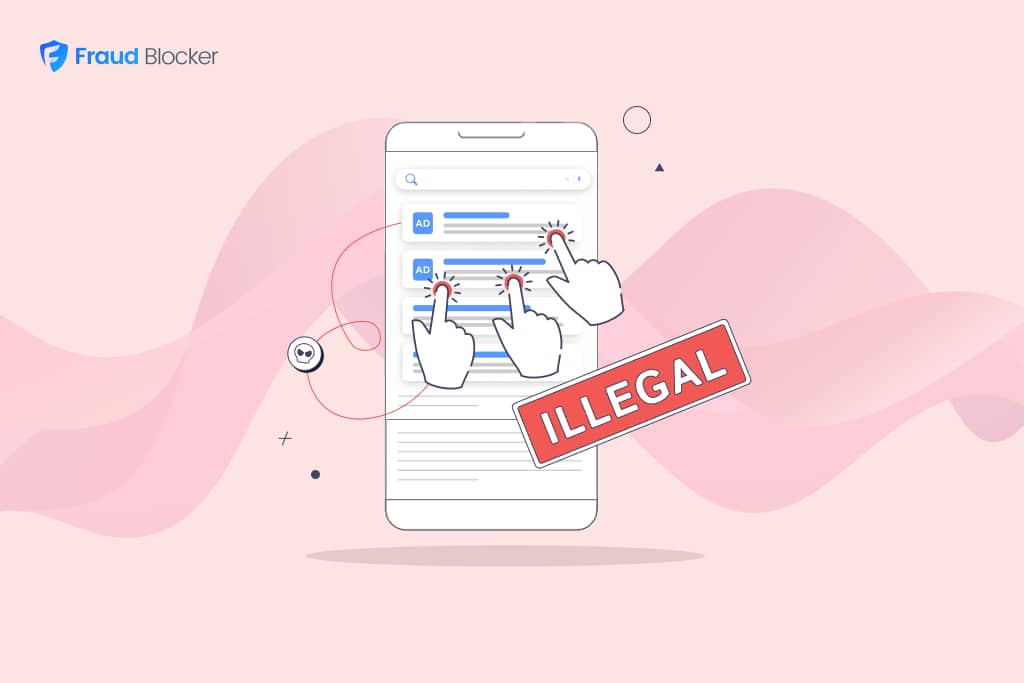
NEW New feature: Verify & block fake emails

We improve your ad performance by blocking click fraud and fake emails

Click fraud is costing advertisers billions in loses. Learn more here.

Click fraud is costing advertisers billions in loses. Learn more here.

Chances are that if you’re involved in paid search marketing of any sort, you’ll have heard the terms invalid clicks, bot traffic, click fraud and maybe even ad fraud. And while you might have assumed that these terms are all pretty interchangeable, you might also be wondering what exactly makes up invalid traffic?
It’s true that there are a range of nuances in the world of invalid clicks and fraudulent traffic. And that if you’re investing money in Google Ads or doing paid social such as Meta Ads it pays to know the difference between click fraud and invalid clicks.
Invalid clicks are clicks on your ads that happen either accidentally or maliciously, but are not indicative of genuine interest from potential customers.
Invalid clicks consists of both of these:
Malicious intent:
Accidental intent:
Google, Meta and the other ad networks recognize that none of these clicks hold real value for advertisers and usually filter them out or reimburse advertisers for these incidents. You can toggle on the amount of invalid traffic you’re seeing in your Google Ads account (Read here).
While invalid clicks are identified through sophisticated algorithms and examination patterns, it seems that even if Google are doing their best to stem the flow, there continues to be a lot of fraudulent activity that goes undetected.
Click fraud is as sub-category of “invalid clicks” and it only relates to the clicks with “Malicious intent” (as shown above). This is often where individuals or bots repeatedly click on an ad with the aim to deplete the advertiser’s budget or to earn money through pay-per-click schemes on their websites. Additionally, invalid clicks can also come from automated or malicious software, highlighting the need for vigilance against such sources that can harm PPC campaigns by mimicking legitimate user interactions.
Unlike the broader category of invalid clicks, which includes unintentional actions, click fraud is always intentional and will often involve sophisticated schemes to mimic real user behavior to evade detection. And this is where click fraud can often bypass the filters that Google and Meta use to block invalid traffic.
Because the fraudsters use techniques to mask their true nature such as switching IP addresses, device spoofing or using VPNs to mask their location, they can usually appear as traffic with ‘legitimate interest’ to the ad platforms.
Click fraud is a sinister tactic that has been growing and maintaining a consistent presence pretty much since the dawn of internet advertising.
There are numerous reasons for people or groups to commit click fraud. Some of these benefits range from simple satisfaction to huge financial rewards.
Starting at the lower end of the scale, we have brand haters or people who may harbor a grudge against your brand for personal reasons. Some people might not like your marketing style, some might resent your branding or perhaps be ex-employees who just want to click you where it hurts (in the wallet).
Direct competitors can also indulge in a little bit of casual click fraud. There are some well publicized cases of rival companies clicking each others ads with the specific intent of depleting ad revenue, which happens more than you might think.
And then we come to the more organized end of the spectrum, which includes fraud app and software developers, unscrupulous website owners and organized crime syndicates.
Online advertising is a $500 billion a year industry, and for scammers, even a small slice of this pie is worth it. And so setting up an app with an inbuilt ad clicker, or a website designed to host ads (known as MFA – made for advertising websites), or even a botnet designed to generate industrial scale clicks and views on ads can be very profitable.
Once a website is setup with Adsense ads, or an app has signed up for the Meta Audience Network, they can simply pay for huge volumes of fake traffic to click on their ads. Click farms offering fake clicks and views can be hired for small change, as little as $10 for thousands of clicks, and often advertise openly on social media platforms.
Click farms can be hired to perform a high volume of invalid clicks
And if you’re wondering how much this happens? In 2023, it’s estimated that between $80-100 billion was lost to invalid traffic sources on PPC campaigns.
👉 Find out more: Read the Cost of Ad Fraud Report by Juniper Research
Ad fraud encompasses a wider range of deceptive practices aimed at manipulating ad views, clicks, and conversions across different forms of advertising, including display, video, and mobile ads. It’s the organized end of the click fraud spectrum and tends to be the headline grabbing volumes of clicks and revenue.
Organized ad fraud can involve sophisticated schemes like pixel stuffing, ad stacking, or creating spoofed websites. Click fraud specifically focuses on the manipulation of clicks in pay-per-click (PPC) advertising campaigns. Both practices detract from the reliability and effectiveness of digital advertising efforts, ultimately harming advertisers’ bottom lines.
As far as Google or Meta are concerned, they come under the blanket term ‘invalid traffic’. Despite their efforts, there are instances where Google failed to detect invalid clicks, highlighting the importance of advertisers being vigilant and critical in assessing their campaign statistics for unusual activity.
Yes, both Google and Meta do automatically scan for invalid activity and if they spot and block engagement on your ads, they do automatically refund your account. In many cases, they preemptively block the click from even happening. And if you detect additional ad fraud activity you can apply for a refund from Google Ads directly.
And in cases where invalid clicks are not automatically detected, both platforms offer avenues for advertisers to report suspicious activity and potentially receive refunds for fraudulent clicks.
In fact, Google collaborates with industry groups like the Media Rating Council, Trustworthy Accountability Group, and Interactive Advertising Bureau to develop and maintain standards for advertising traffic worldwide.
However the prevailing consensus among advertisers is that the ad giants don’t do enough to block the more aggressive forms of fraudulent internet traffic. In general, the marketing commentators feel that both Meta and Google make a phenomenal sum of money from their advertising platforms. And to a degree, the fake traffic actually works in their favor, so they do the bare minimum to eliminate much of the bad traffic.
But by using made for purpose click fraud detection software such as Fraud Blocker, it becomes clear how many invalid clicks get through the net. In fact our platform picks up an extra 18% of ad clicks as invalid (on average), after they’ve been filtered by Google Ads and Meta.
There are numerous tell-tale signs that your ads have been clicked by bots, click farms or other sources of fake traffic.
Some of the most common are:
Of course keeping an eye on your ad campaign stats in your Google Ads or Meta for Business dashboard is the first port of call. While some invalid clicks can be down to genuine human behavior, it’s worth keeping an eye out for unusual click patterns or suspicious clicks.
Using Google Analytics alongside Google Ads can also help with monitoring traffic sources, detecting suspicious activity, and help you identify and minimize invalid clicks effectively.
If you’re managing PPC campaigns on Google Ads, Facebook or Instagram, you are likely losing a large chunk of your ads clicks to fake traffic. And if you’re in an industry with high value keywords such as in law, gambling, insurance, education, loans or addiction/rehab treatments then you have even more reason to block bad traffic.
Advertising costs for these industry groups can be notoriously high, and fraudulent clicks can quickly add. And if you’re assigning your advertising budget based on traffic performance, click fraud prevention software pretty much pays for itself.
Fraud Blocker provides an all-in-one solution that improves ad performance by analyzing, detecting and preventing ads from appearing to bots, competitors and other malicious sources.
Today, the company protects over 4,000 websites and analyzes over 500,000 unique IP behavior daily to ensure that you are not wasting your ad spend on fraudulent and invalid ad traffic.
Fraud Blocker blocks sources of fraudulent ad traffic by monitoring inbound web visitors to your website and looking for irregular behavior from the source that could suggest it’s from a bot, non-human source, click farm, competitor, accidental clicks, and more.
This analysis includes tracking a web visitor’s IP address and device fingerprint, and reviewing dozens of signals in real-time such as bounce rates, IP-to-device ratios, VPNs, click frequency, etc.
Once an invalid or low quality user is detected, Fraud Blocker automatically prevent ads from being served to them, thus saving you money while also improving your ad performance.
Try our 7-day free trial and see how much money we can save you.


